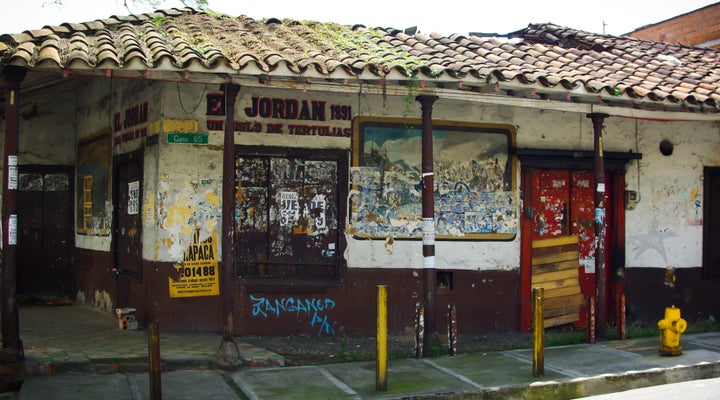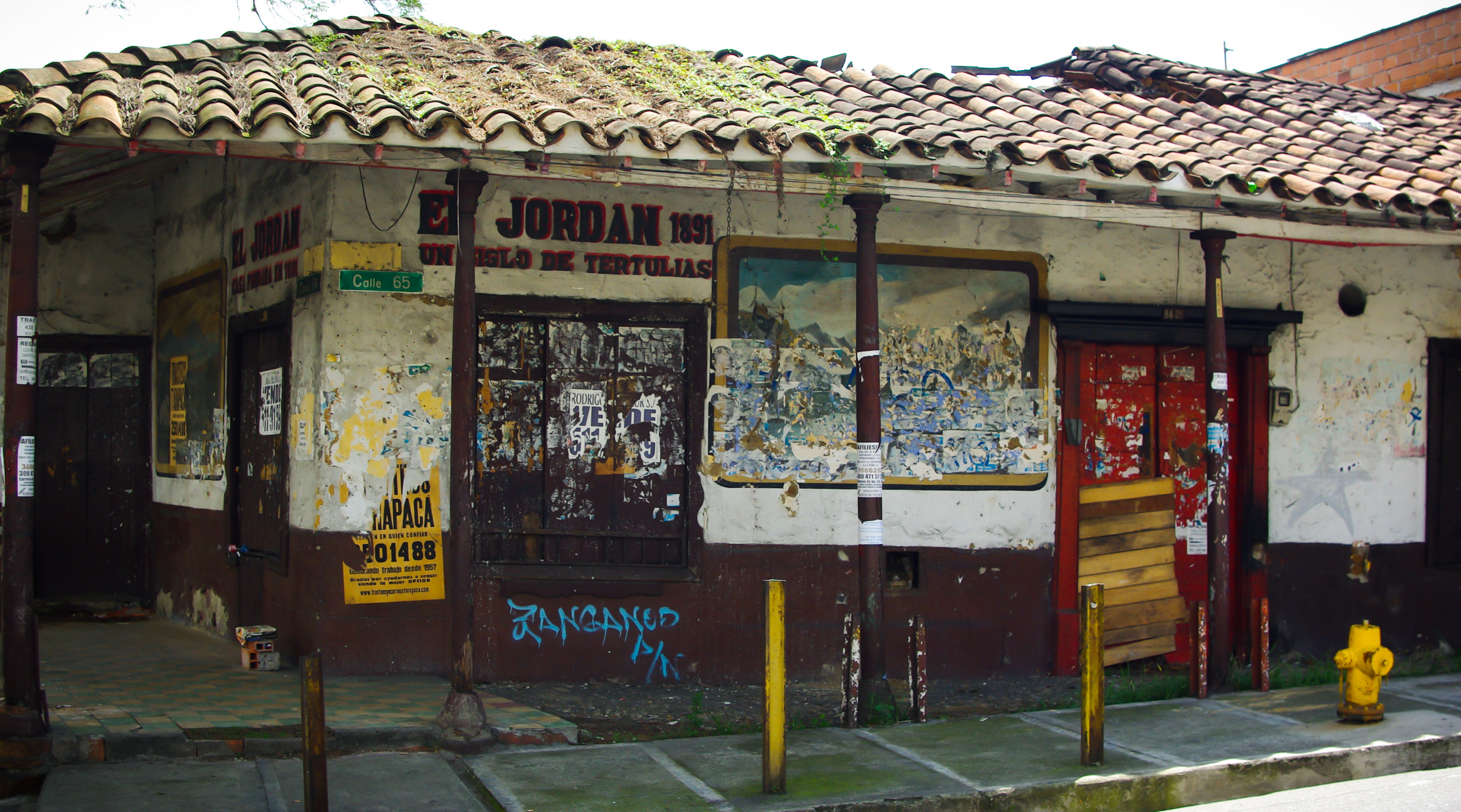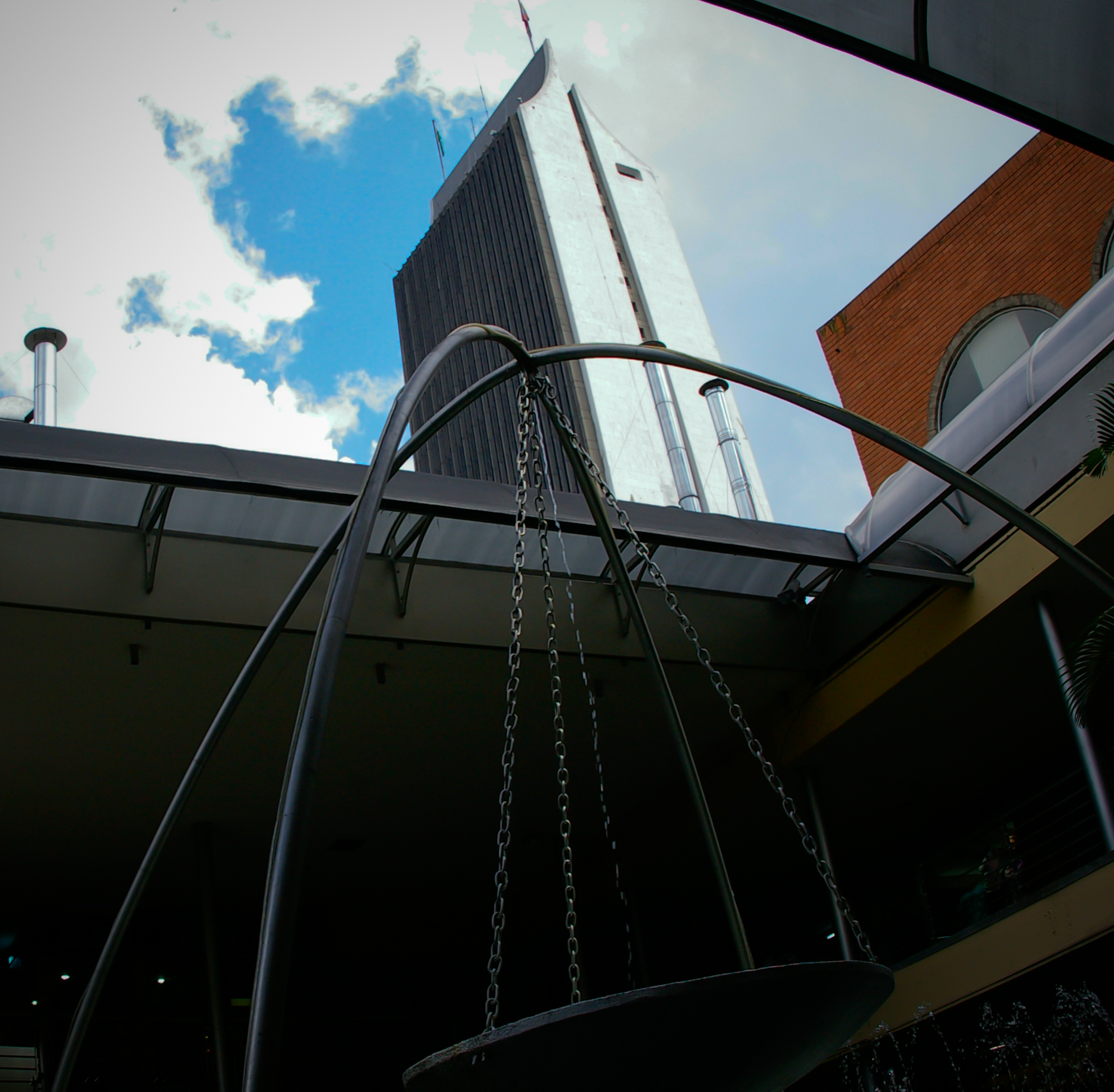
It should be one of Medellin's most charming buildings. Instead, El Jordan has a collapsed roof, cracks along the wall and boarded-up doors and windows. Even the ceiba tree on the nearby street corner -- thought to be even older than the building itself -- is leafless and rotting from the inside, thanks to years of local residents burning plastic garbage nearby or crashing motorcycles into the trunk.
El Jordan is one of the few historic buildings still standing in Medellin, Colombia's second-largest city, which is better known for its ambitious urban projects than its historic neighborhoods. Unlike Cartagena's colonial walls or Bogota's La Candeleria, Medellin has no old city. No winding cobbled streets, no romantic narrow alleyways, no preserved, stately houses -- aside from a few.

El Jordan is one of those houses. Built in 1881 in the northwestern sector of Robledo -- back then, just a village on a hillside -- it was used as an inn for traveling salesmen and farmers moving fresh fruit and vegetables into the city. In the 1920s, when Robledo becama a popular weekend vacation spot thanks to several man-made swimming holes, El Jordan was used as a tavern where men ordered and drank cold beer and played billiards. Students and professors from the nearby engineering school ordered coffee and chatted on the front porch, or fed coins to the jukebox.
"All the romantic relationships in Robledo revolved around El Jordan thanks to that jukebox," says Margarita Velez, age 72, who has spent nearly her entire life in the neighborhood. As a little girl, she recalls peering into El Jordan when she walked past it with her father, and seeing women dancing on the billiard tables. Her father gave her a smack for staring.
Now, its roof is clotted with vines and shredded fliers are pasted on the walls. El Jordan looks more like a crack den than the social hub it used to be.

The building has long been owned by the Burgos family, one of the first settlers in Robledo in the 19th century. They kept the place running as a bar until 2008 when they shut it down. "The street corner got too dangerous, too full of traffic," says Raul Burgos, who used to run the business. He blames El Jordan's decay on the municipal government, for hemming and hawing over whether they should purchase the building and fix it up, or leave it in the Burgos' hands.
El Jordan is not the only one of Medellin's older buildings to have fallen into a state of disrepair. The city's old tramway is overgrown with weeds and layered with garbage. The Palacio de Egipcio, an intriguing building built in 1932 and influenced by African architecture, is grubby and stained with pollution.
Most of El Jordan's historic value comes from the fact that it is still standing at all. "Buildings in Medellin usually never last more than two generations," says Luis Fernando Gonzalez Escobar, an architect and historian at the National University. Medellin city planners showed little interest in preserving buildings of interest. The Gonzalo Meja building in the city center, which housed one of Medellin's first theaters, was knocked down in the 1970s to make way for the city's tallest skyscraper, the Coltejer (pictured below). All the old soda fountains and cafes and tango bars that once proliferated along the center's Junin Avenue have since been replaced with badly lighted stores hawking skimpy women's clothing.

"Medellin is a Peter Pan city," observes Gonzalez. "It always wants to seem young, cosmopolitan, and in fashion." As Gonzalez explains, partly because Medellin was so isolated from the rest of the world -- ringed in by mountains, a 30-day journey to the coast -- the city's elites were always nervous about being perceived as "backwards." This expressed itself, in part, in an obsession with "modernizing" Medellin during the mid-20th century.
Now, the closest thing Medellin has to an Old City is a sad caricature -- tourist hotspot the Pueblito Paisa, a recreation of a typical 19th-century Colombian village, complete with cobblestone streets and a fountain in the town square.
Not all of the old buildings in Medellin were worth preserving because of mere historic value. Plenty of the older architecture was, well, pretty tacky-looking: imitations of an ornate European style that was supposed to make the city look progressive. The Gonzalez Mejia theater, bulldozed to make way for a skyscraper, wasn't even built by a Colombian -- the architect was Belgian.
Luis Saldarraiga, who oversees the preservation of estates deemed to be historically or culturally valuable at the city's Ministry of Culture, says the prevalence of the imitation-European buildings that once dominated downtown Medellin only makes El Jordan even more valuable. "It's representative of something regional," he says. "It belongs to us more. It's not something copied from abroad."
There are some signs that the city's attitude towards the older buildings is beginning to change. After years of wrangling and red tape with the Burgos family, last year the city finally bought El Jordan, with plans to clean it up -- although it's not clear yet whether what that will involve. Robledo resident Margarita Velez says she hopes the building can stay standing. "I like progress, but there are some things worth preserving," she says.
Until then, El Jordan sits molding in Robeldo. Not even the birds go near it.
Photos by Sergio Patiño.